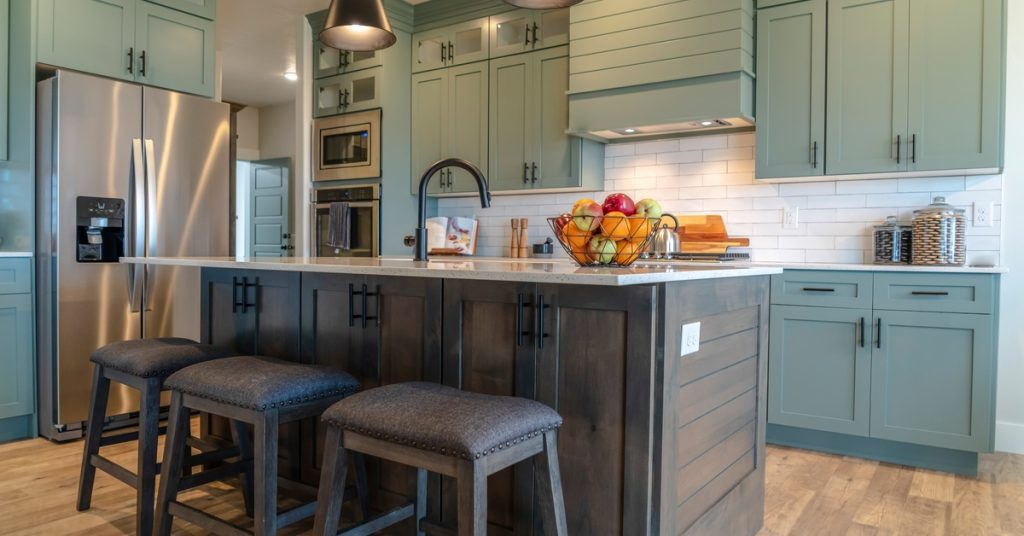Creating a truly memorable kitchen involves moving beyond standard layouts and incorporating unique features that reflect your personal style. An exceptional kitchen balances beautiful aesthetics with practical functionality, making it the true heart of the home. By customizing design elements that make your kitchen stand out, you can create a distinctive and inviting space.
Select a Striking Backsplash
A well-chosen backsplash serves as a focal point and adds character. It provides an opportunity to introduce color, texture, and pattern into the space, creating a powerful visual statement. Materials like handcrafted ceramic tile, patterned cement, or a single slab of marble can transform the area behind your cooktop and counters into a work of art.
Consider extending the backsplash material to the ceiling for a dramatic, cohesive look. This technique protects your walls and draws the eye upward, making the room feel taller and more spacious. Whether you opt for bold geometric patterns or subtle, reflective glass tiles, a unique backsplash adds a layer of sophistication.
Upgrade Your Cabinet Hardware
Cabinet hardware is a small design element that offers a fun opportunity to make your kitchen stand out. Switching out standard knobs and pulls for something more distinctive can completely change the look of your cabinetry without a major renovation. Hardware can tie together other metallic finishes in the room, such as your faucet and light fixtures, creating a unified and polished look.
From artisan-forged metal pulls to elegant glass knobs, there are several types of cabinet hardware available to complement your design vision. This simple update infuses style and quality into the most-used elements of your kitchen.
Incorporate Statement Lighting Fixtures
Lighting affects the room’s mood and affects how comfortably you can use the kitchen. Statement fixtures can act as stunning sculptural elements. For example, a large, decorative pendant over an island or a unique chandelier above a dining area immediately captures attention and sets a sophisticated tone.
Kitchens work best with ambient, task, and accent lighting. Ambient lighting serves as the foundational layer, providing overall illumination. Ambient lights include recessed ceiling lights and central overhead fixtures.
Task lighting focuses on specific work areas. Task lights include under-cabinet lights for food prep or pendant lights above the kitchen island for precise illumination. Finally, accent lights highlight architectural features or design elements. Examples include LED strip lights showcasing open shelving or a spotlight emphasizing artwork.
The best kitchens combine unique design elements with practical tools. From striking backsplashes to statement lighting, every detail contributes to a space that reflects your personal style and enhances daily life. Thoughtful upgrades like distinctive cabinet hardware and layered lighting can transform your kitchen into a true centerpiece of your home.






